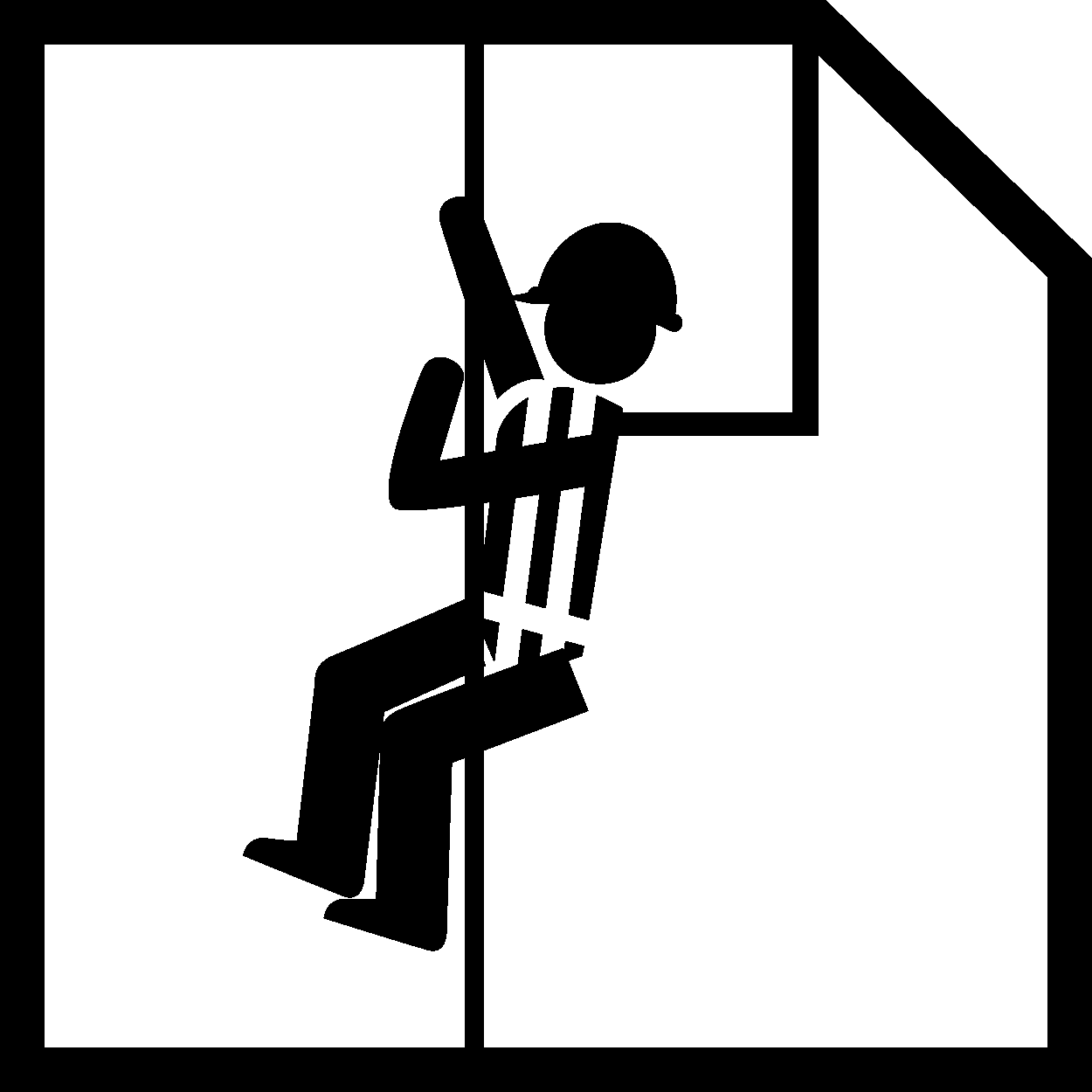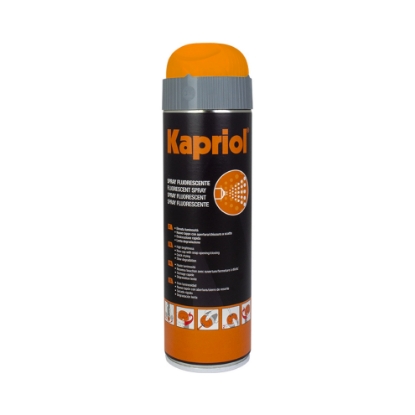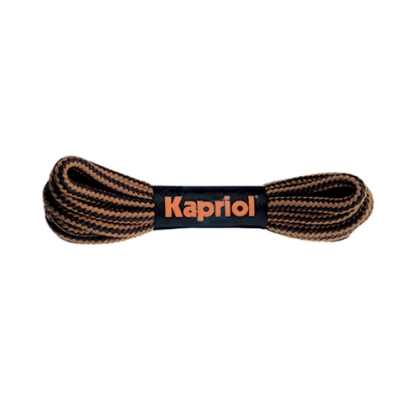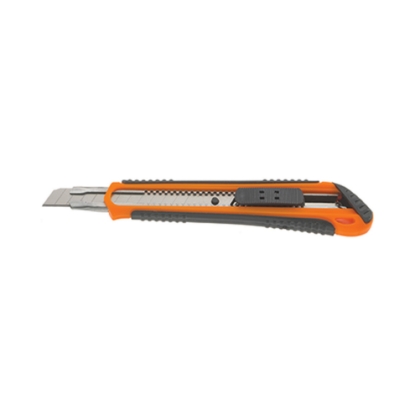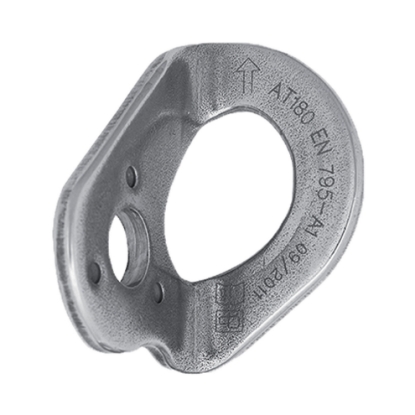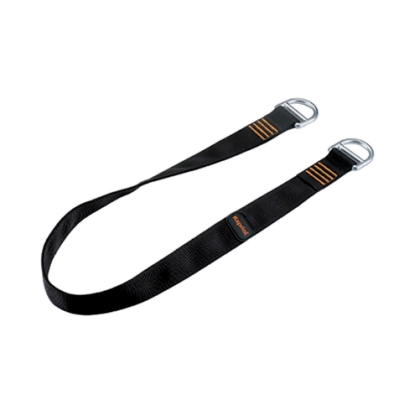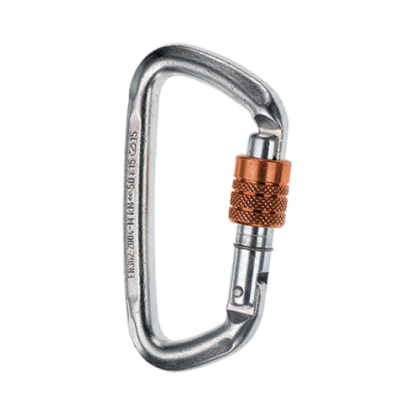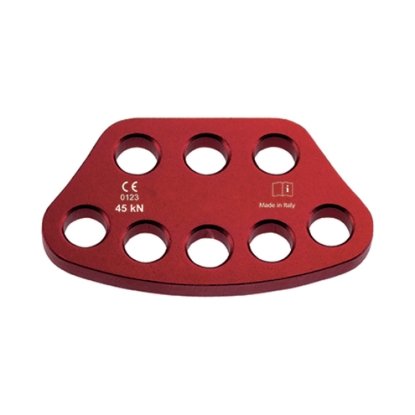| Art./Item | Pcs |
|---|---|
| 27932 | 1 |
Stainless steel anchor hooks with a drilling depth of 72 mm, functional for permanent anchoring on solid walls, rocks and similar highly resistant bases. For the attachment of anchor hooks it is necessary to make a prior drilling of the structure, which is functional for installation with resin or two-component glue.
TECHNICAL SPECIFICATIONS
- drilling depth 72 mm
- breaking load 30 kN
- standard EN 795A
MATERIAL
- Hook: stainless steel
Temporary anchorage systems
Pendulum effect
Falling factors
Anchors are the key points that guarantee the operators safety at height. Temporary anchoring systems can be connected to permanent anchors, such as connecting webbing. Here below there are some examples that demonstrate the different resistance of the anchor according to the type of use. It is good practice for users to be aware of how significantly the resistance can vary.
1. With this type of use, its resistance is approximately 2/3 of the webbing nominal value
2. With this type of use, its resistance is 2 times higher than the webbing nominal value
3. If used on a structure with edges, the resistance is approximately 2/3 of the webbing nominal value
4. If used on a structure with edges, the resistance is approximately 1/3 of the webbing nominal value
5. With this type of use, its resistance is 1/2 of the webbing nominal value
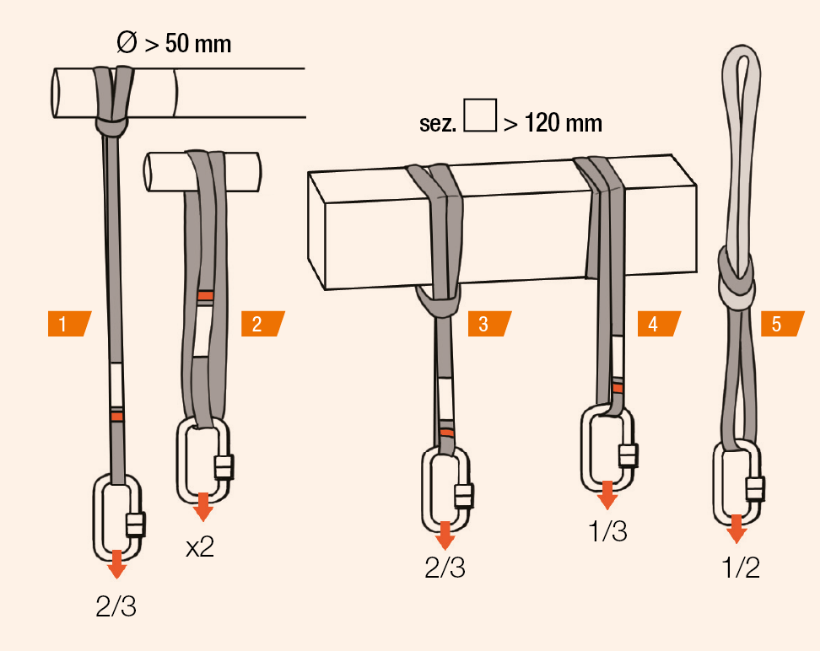
If the operator is connected to an anchorage point by a retracting device or a rope, in the event of a fall there may be hazardous and uncontrolled side swinging, the so-called pendulum effect. To decrease the risks associated to the pendulum effect, it is important that the fall protection device is positioned vertically in relation to the work area.
The operator must therefore work with a safety clearance of 30° below the anchorage point. When it is not possible to position the rope retracting or fall protection devices in a perpendicular position in relation to the anchorage point, it is necessary to foresee a number of deviation or sheave points to dampen the pendulum effect.
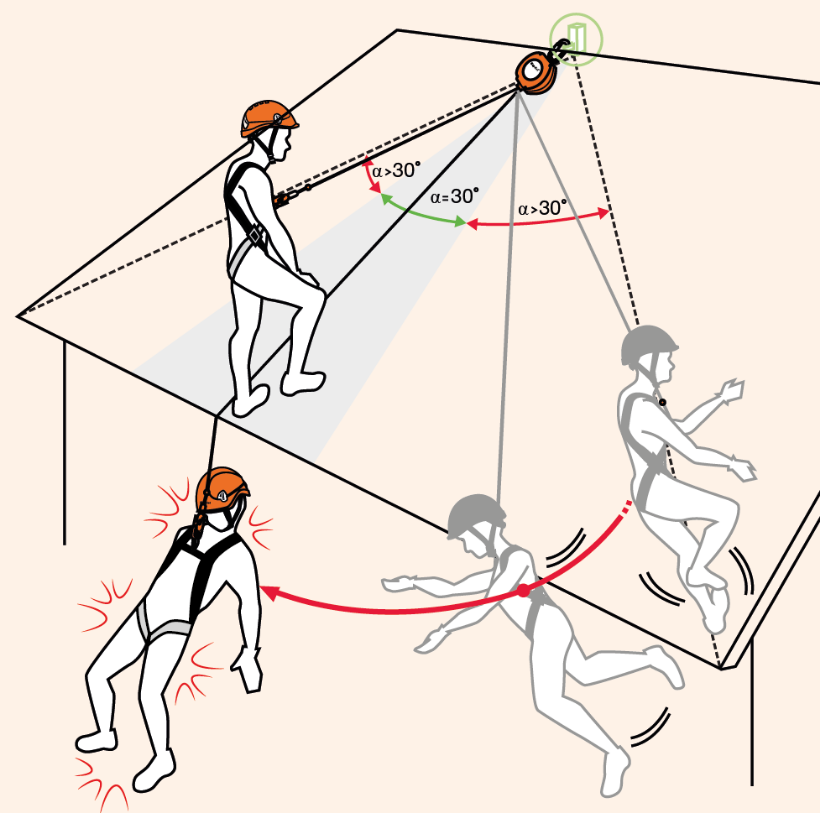
A FATTORE DI CADUTA 0
Il punto di ancoraggio è posto al di sopra della testa dell'operatore; il dispositivo anticaduta risulta essere completamente disteso. In caso di caduta si ha la minor distanza tra il piano di calpestio dell'operatore e il possibile ostacolo sottostante.
B FATTORE DI CADUTA 1
Il punto di ancoraggio è posto allo stesso livello del punto di attacco dell'imbracatura. In questo caso la caduta è pari alla lunghezza del cordino + la distanza del assorbitore di energia intervenuto.
C FATTORE DI CADUTA 2
Il punto di ancoraggio è posto sullo stesso piano di calpestio dell'operatore. In questo caso la caduta è pari a due volte la lunghezza del cordino + la distanza dell'assorbitore di energia intervenuto.
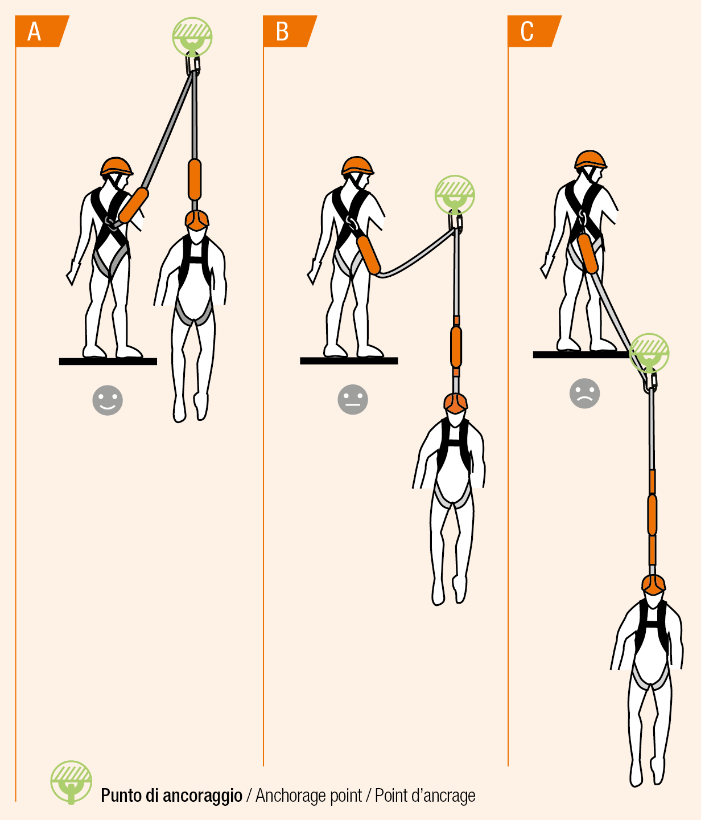
Recommended use
